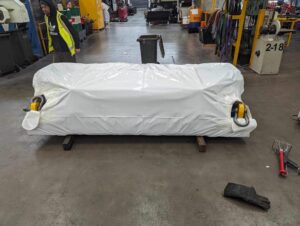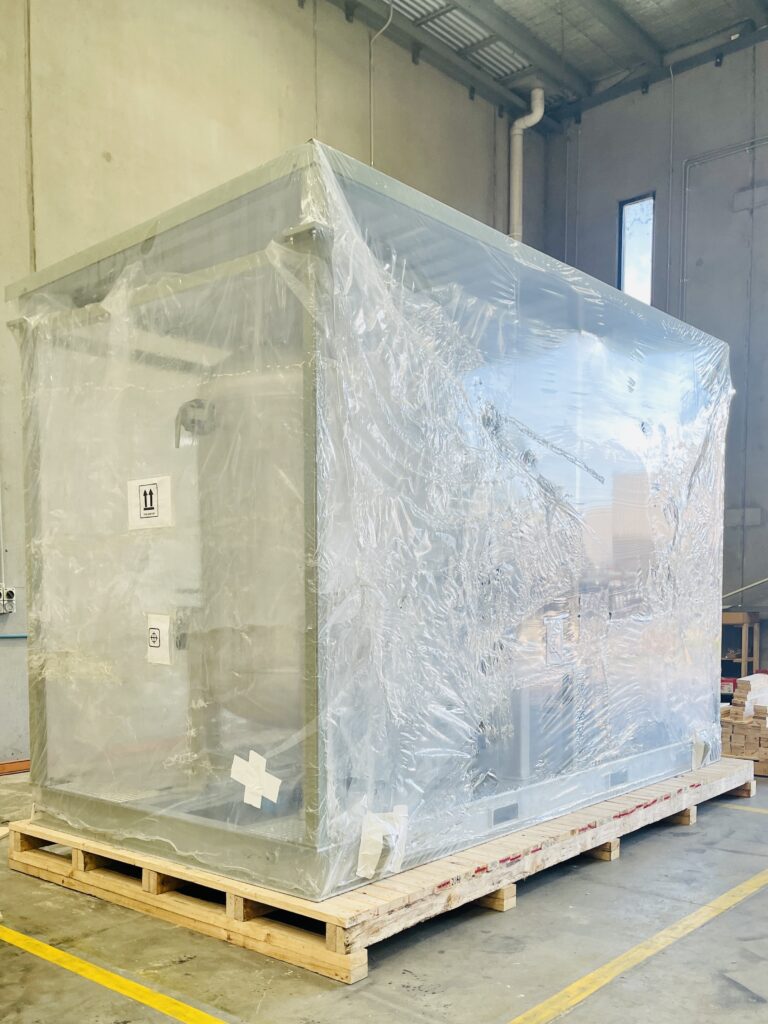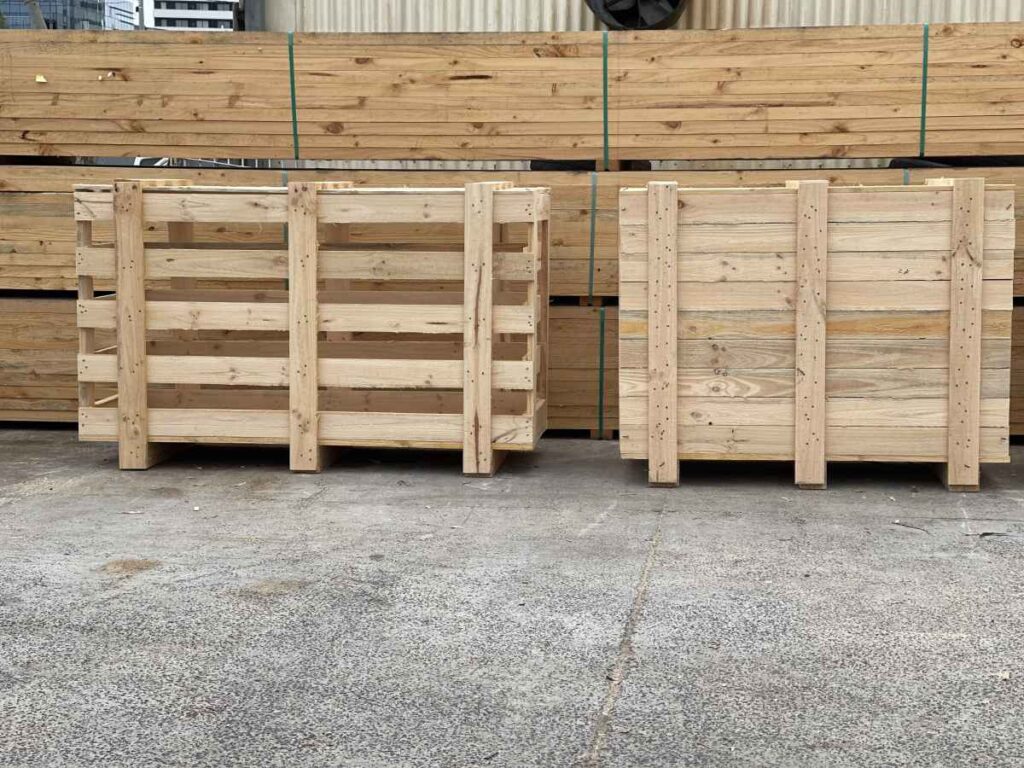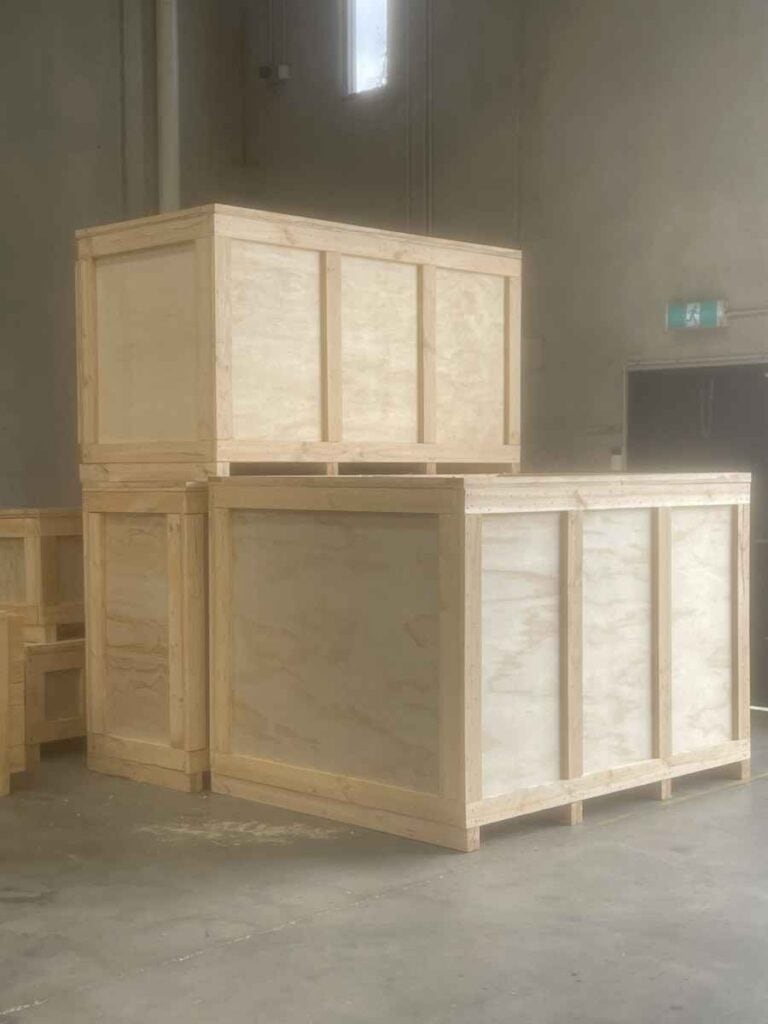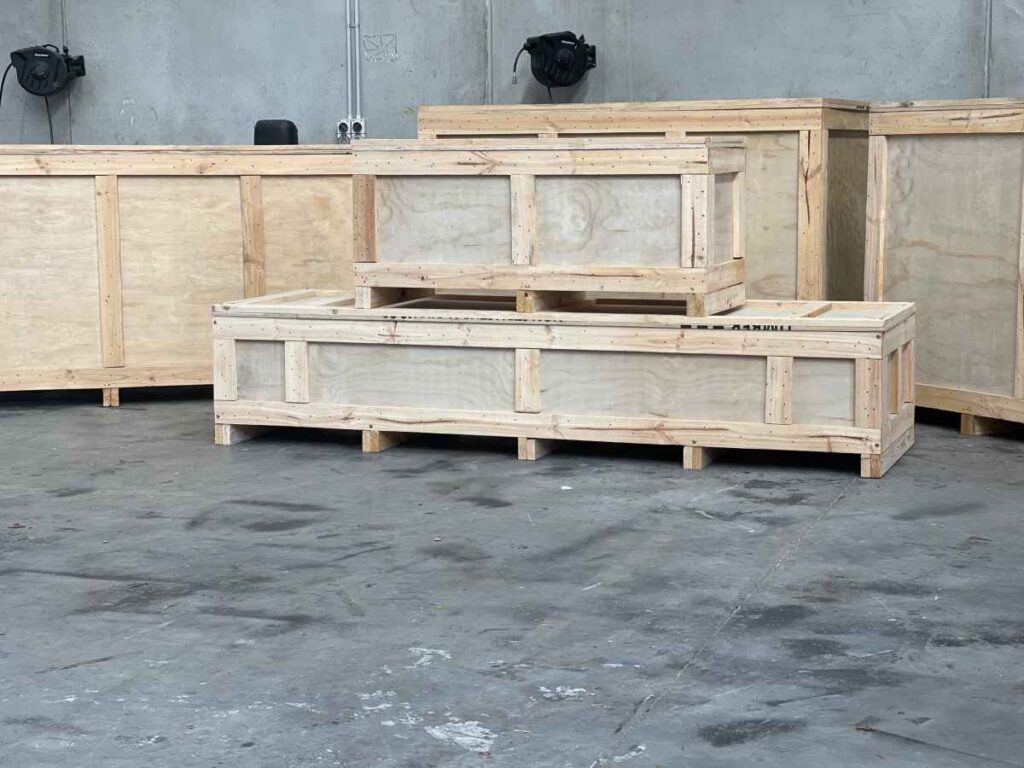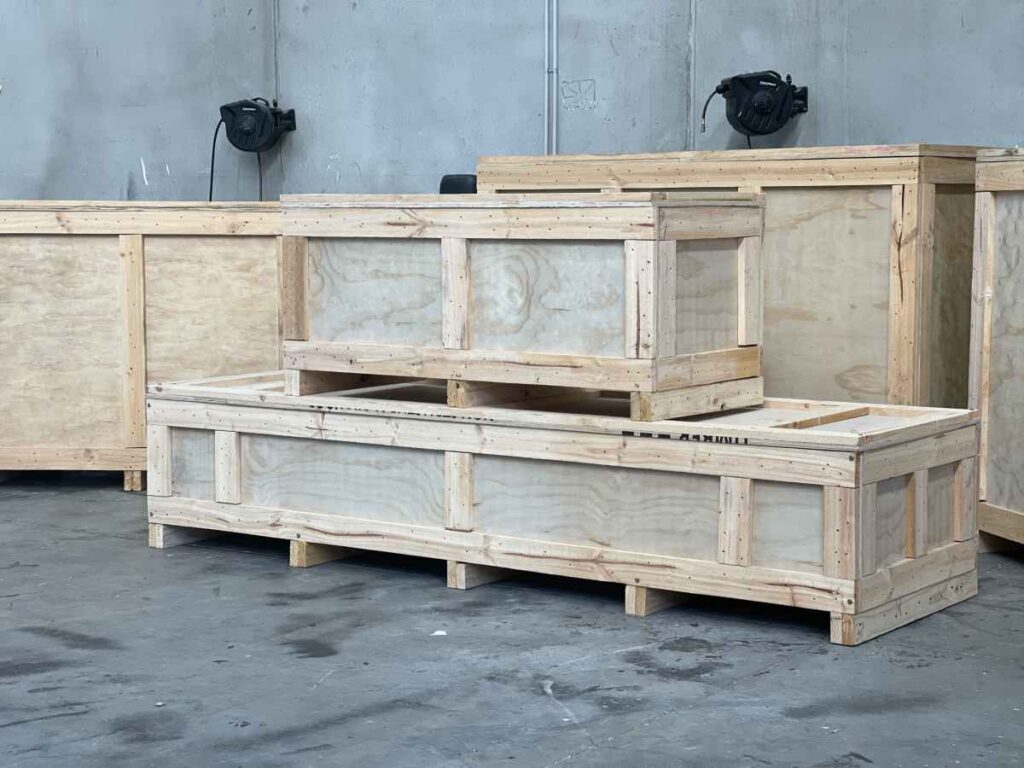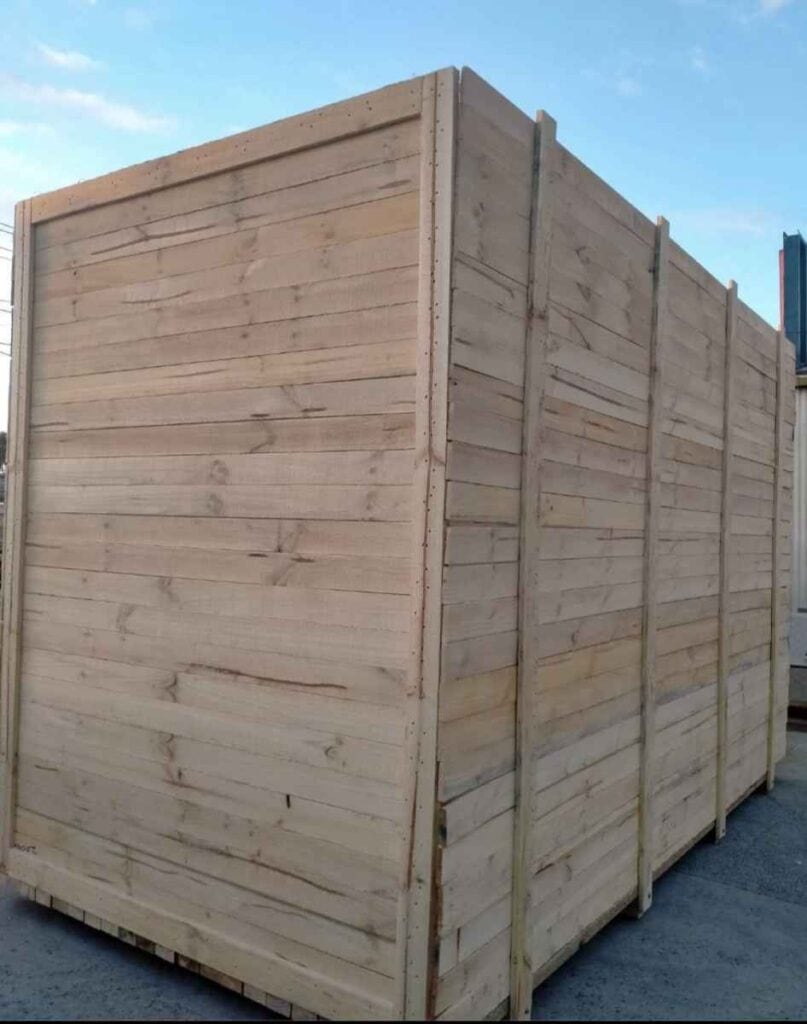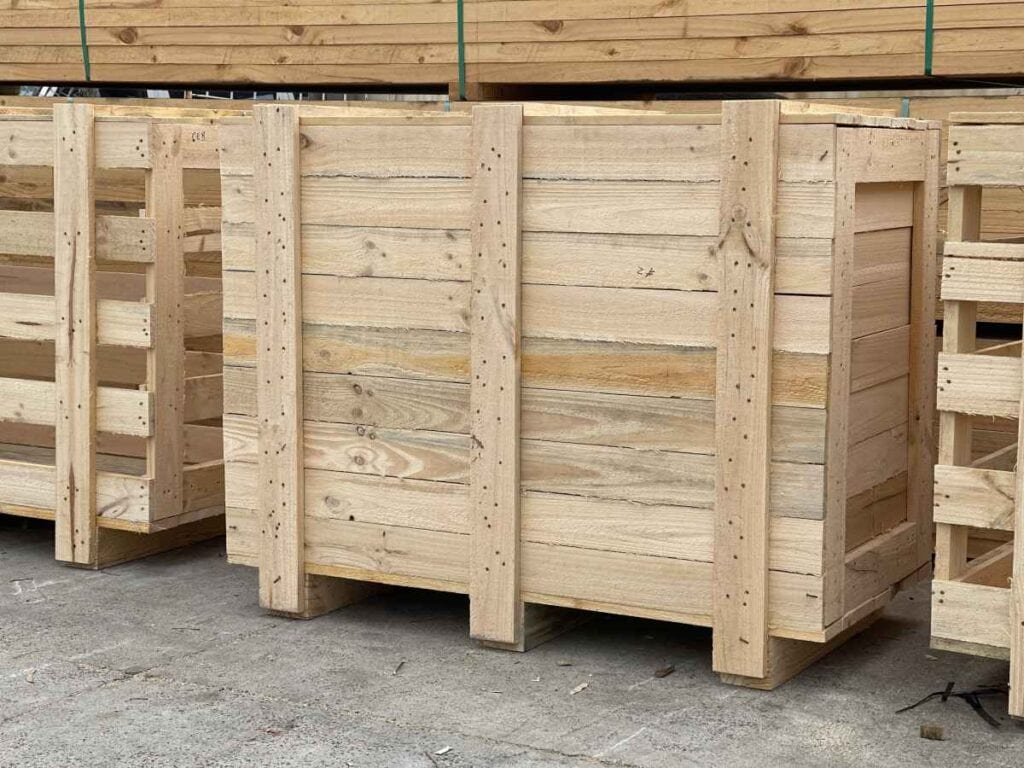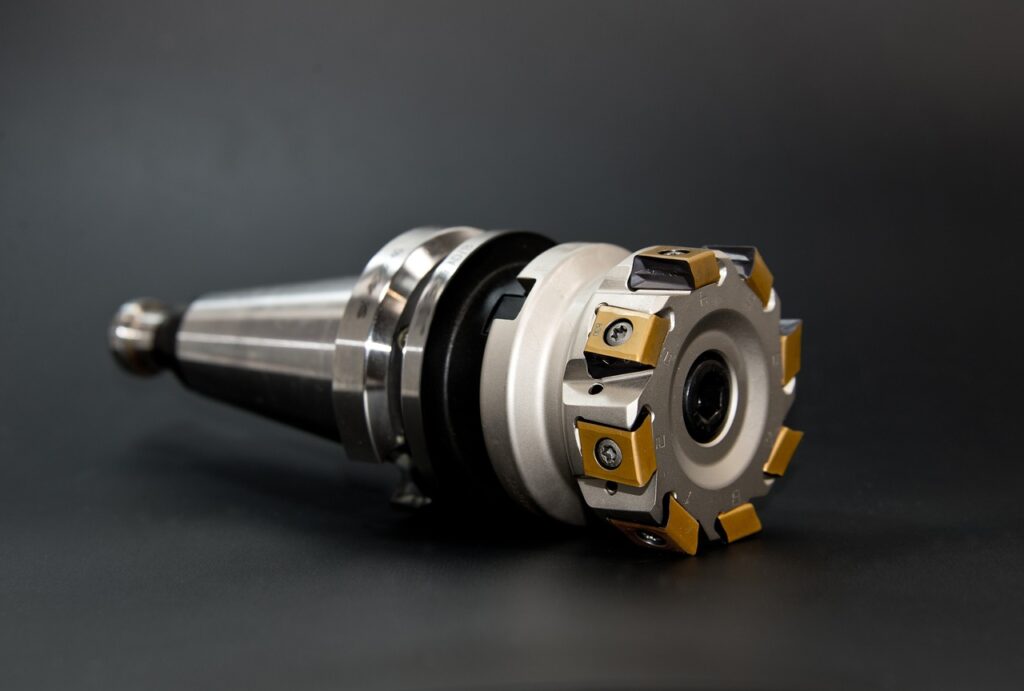Are Crates the Optimal Choice for Airfreight? A Comprehensive Analysis
Overview of Airfreight and Its Significance
The globalized nature of trade and commerce has heightened the importance of efficient and timely transportation of goods. In this fast-paced environment, airfreight emerges as a critical component, ensuring swift deliveries and maintaining the rhythm of supply chains across diverse industries.
Introduction to the Debate: Are Crates the Optimal Choice for Airfreight?
As the demand for airfreight continues to surge, the packaging of goods for air transportation has become a subject of intense scrutiny. Among the various packaging options available, the use of crates is a topic of debate. Are these wooden enclosures truly the optimal choice for airfreight, given the unique challenges posed by this mode of transportation?
C. Importance of Proper Packaging in Airfreight
Airfreight operates in an environment characterized by speed, precision, and sometimes, unpredictability. Proper packaging is not just a logistical formality; it's a crucial determinant of the success of airfreight operations. Goods must withstand rapid loading and unloading, turbulence during flight, and potential exposure to varying environmental conditions.
This exploration aims to navigate through the intricacies of the debate surrounding the use of crates in airfreight. By dissecting the advantages, challenges, and alternatives associated with crates, we hope to offer businesses and decision-makers a comprehensive understanding to make informed choices tailored to their specific airfreight needs.
Understanding Airfreight Challenges
A. Overview of the Unique Challenges Posed by Air Transportation
Airfreight, while providing unparalleled speed, comes with its set of challenges. The need for rapid loading and unloading, adherence to strict weight and volume restrictions, and exposure to turbulence during flight necessitate packaging solutions that can withstand these rigorous processes.
B. Sensitivity to Weight and Volume Restrictions
In the realm of airfreight, weight is currency. The heavier the cargo, the more it impacts the cost of transportation. Crates, with their customizable nature, present an opportunity to efficiently utilize cargo space while maintaining compliance with weight restrictions.
C. Impact of Turbulence and Handling During Loading/Unloading
The dynamics of air travel introduce potential risks to cargo integrity. Turbulence and the handling processes during loading and unloading require packaging that can act as a reliable shield. Crates, with their sturdy construction, stand poised to provide this protective barrier.
Advantages of Using Crates in Airfreight
Protection Against External Elements
1. Weather Conditions
Crates, acting as robust enclosures, shield cargo from the vagaries of weather conditions. Whether it's rain, snow, or extreme temperatures, crates provide an additional layer of defense.
2. Temperature Variations
The insulation offered by crates becomes particularly valuable for items sensitive to temperature fluctuations. This ensures that goods reach their destination in optimal condition, unaffected by external thermal variations.
B. Structural Integrity and Durability
Crates, crafted from high-quality materials, offer structural integrity and durability. In the face of the handling challenges inherent in airfreight, this becomes a pivotal attribute for the safe transportation of goods.
C. Customization for Various Cargo Types
The versatility of crates shines through in their ability to be customized for different types of cargo. Fragile items can be snugly secured with additional padding, ensuring a tailored fit for each shipment.
D. Stackability for Efficient Use of Cargo Space
Efficiency in cargo space utilization is a crucial aspect of airfreight. Crates, with their stackable design, contribute to the optimization of available space within the aircraft. This not only reduces costs but also enhances overall airfreight efficiency.
E. Facilitation of Easy Handling and Transportation
Crates are designed with practicality in mind. Their standardized shapes allow for convenient handling, enabling smooth loading and unloading processes. This standardized design also makes them compatible with various handling equipment used in the airfreight industry.
Types of Crates Suitable for Airfreight
A. Plywood Boxes
1. Lightweight and Sturdy Construction
Plywood boxes strike a delicate balance between weight and strength, making them particularly suitable for airfreight where payload capacity is a critical consideration. Their lightweight nature ensures that they contribute minimal additional weight to the overall cargo.
2. Customization Options
The versatility of plywood allows for a wide range of customization options. Plywood crates can be tailored to meet the specific dimensions and requirements of the cargo, ensuring a secure and snug fit.
B. Wooden Crates
1. Traditional Strength and Reliability
Traditional wooden crates, known for their strength and reliability, are ideal for airfreight situations involving heavier items. Their sturdy construction provides a robust protective barrier against the potential hazards of air transportation.
2. Considerations for Weight
While wooden crates offer unparalleled strength, their weight needs to be carefully considered, especially in scenarios where adhering to strict weight restrictions is crucial.
Case Studies: Success Stories of Crates in Airfreight
A. Examples of Industries Utilizing Crates for Air Transportation
1. Aerospace Components
Case Study: A leading aerospace manufacturer relies on custom crates to transport delicate components crucial for aviation. The precision and fragility of these components demand a packaging solution that provides both protection and ease of handling.
In a recent project, the use of custom crates resulted in a significant reduction in instances of damage during transit. The bespoke design of the crates ensured that each component was securely held in place, minimizing the risk of shifting and potential damage caused by turbulence.
2. Fragile Electronic Equipment
Case Study: A technology company specializing in the production of delicate electronic equipment sought a reliable packaging solution for airfreight. Crates, customized to the exact dimensions of the electronic components, provided the necessary protection against shocks and vibrations.
In this case, the company reported a notable decrease in the number of damaged items upon adopting the use of custom crates. The enhanced protection afforded by the crates contributed to the company's commitment to delivering high-quality products to its clients.
3. Art and Museum Artifacts
Case Study: An art gallery faced the challenge of transporting valuable artifacts to international exhibitions. These artifacts, ranging from paintings to sculptures, required packaging that not only protected them from external elements but also ensured their preservation during air transportation.
The adoption of custom crates tailored to the specific dimensions and fragility of each artwork proved to be a game-changer. The crates offered a secure environment, shielding the delicate artworks from potential damage caused by handling, temperature fluctuations, and turbulence. As a result, the art gallery experienced a remarkable reduction in instances of damage, preserving the cultural heritage they transported.
B. Real-World Instances of Successful Airfreight with Crates
1. Company A: Precision Engineering Parts
Case Study: Company A, a manufacturer specializing in precision engineering parts, faced the challenge of ensuring the safe transit of intricate components to international clients. These components, characterized by their small size and intricate details, required packaging that could secure them in place and prevent any damage during air transportation.
Upon transitioning to the use of custom crates, Company A witnessed a significant reduction in product damage. The bespoke design of the crates, combined with the use of cushioning materials, provided a secure and stable environment for the precision engineering parts. This not only minimized the financial losses associated with damaged goods but also enhanced the company's reputation for delivering high-quality products.
2. Company B: High-Value Electronics
Case Study: Company B, a manufacturer of high-value electronics, sought a packaging solution that could ensure the safe transport of their products to global markets. The fragility of electronic components and the importance of delivering fully functional devices necessitated a packaging approach that minimized the risk of damage during airfreight.
The adoption of custom crates specifically designed for their electronic products yielded positive results. Company B reported a decrease in incidents of product damage, ensuring that their electronic devices reached end-users in optimal condition. The enhanced protection provided by the crates also contributed to customer satisfaction and repeat business.
Challenges and Considerations
A. Weight Considerations
1. Impact on Cargo Capacity
While the protective features of crates are undeniable, their weight contributes to the overall cargo capacity of the aircraft. Businesses must carefully consider the balance between the structural strength of crates and their impact on cargo weight.
2. Balancing Structural Strength with Weight Constraints
Achieving an optimal balance between the structural strength required for protection and the weight constraints imposed by airfreight regulations is a key consideration. This delicate equilibrium ensures that the benefits of using crates do not inadvertently result in exceeding weight limitations.
B. Cost Implications
1. Comparing Crate Expenses with Alternative Packaging
The decision to use crates for airfreight involves an initial expense that businesses must weigh against potential long-term savings. Comparisons with alternative packaging solutions provide insights into the cost-effectiveness of adopting crates.
2. Long-Term Cost-Effectiveness
While crates may involve upfront costs, their long-term cost-effectiveness becomes apparent through reduced cargo damage, fewer insurance claims, and enhanced efficiency in the overall airfreight process. The investment in durable and protective packaging can result in substantial savings over time.
Alternatives to Crates for Airfreight
A. Airfreight Containers
1. Standard ULDs (Unit Load Devices)
Airfreight containers, especially standardized Unit Load Devices (ULDs), offer an alternative to crates for certain types of cargo. These containers are designed for efficient loading into aircraft, providing a secure and enclosed environment for goods.
2. Specialty Containers for Delicate Items
For delicate items that require precise climate control or shock-absorbing features, specialized airfreight containers may offer an alternative to crates. These containers are designed to cater to the specific needs of fragile or sensitive cargo.
B. Packaging Materials
1. Foam and Cushioning
In instances where the use of crates might be impractical, materials such as foam and cushioning can serve as alternatives. These materials provide a layer of protection against shocks and vibrations during air transportation.
2. Shrink Wrapping
For items with irregular shapes or when the use of a rigid crate is not feasible, shrink wrapping offers a cost-effective solution. It securely wraps the items, providing a protective barrier against external elements.
Industry Standards and Regulations
Compliance with Aviation Regulations
Manufacturers and businesses utilizing crates for airfreight must adhere to established aviation regulations. Compliance ensures the safety and legality of airfreight shipments, and it is imperative for businesses to stay informed about and adhere to these standards.
Guidelines for Packaging Materials and Methods
Industry guidelines provide recommendations for selecting appropriate packaging materials and methods to meet airfreight standards. Following these guidelines ensures that the chosen packaging solutions align with the safety requirements of air transportation.
The Role of International Air Transport Association (IATA) Regulations
The International Air Transport Association (IATA) plays a crucial role in shaping and enforcing regulations governing air transportation. Businesses relying on crates for airfreight must stay abreast of IATA regulations to guarantee compliance and adherence to industry standards.
Expert Opinions and Testimonials
Insights from Logistics and Packaging Experts
Expert A: Dr. Jane Smith, Packaging Specialist
"In my years of research, I've found that custom crates, when designed and utilized correctly, offer unparalleled protection for airfreight cargo. Their versatility and customization options make them a preferred choice for many industries."
Dr. Jane Smith, a renowned packaging specialist, emphasizes the importance of correct crate design and utilization. According to her expertise, the versatility and customization capabilities of crates contribute significantly to their effectiveness in providing protection during air transportation.
2. Expert B: John Thompson, Logistics Consultant
While crates provide excellent protection, businesses must carefully assess their unique needs and consider factors such as weight, cost, and alternatives. The decision to use crates should align with the specific requirements of the cargo and the nuances of the airfreight operations.
John Thompson, a seasoned logistics consultant, highlights the need for businesses to conduct a thorough assessment of their unique needs. He emphasizes that the decision to use crates should be informed by a careful consideration of factors such as weight, cost implications, and available alternatives.
Future Trends and Innovations in Airfreight Packaging
A. Emerging Technologies in Packaging for Air Transport
1. Smart Packaging Solutions
The integration of smart technologies into packaging, such as IoT sensors and RFID tracking, is anticipated to revolutionize airfreight. These technologies provide real-time monitoring and data analytics, enhancing visibility and control over the cargo throughout its journey.
2. Sustainable Packaging Solutions
With an increasing focus on sustainability, the airfreight industry is witnessing a shift towards eco-friendly packaging materials and practices. Future trends may see the adoption of biodegradable materials and innovative packaging designs that minimize environmental impact.
B. Advances in Tracking and Monitoring for Enhanced Security
Advancements in tracking and monitoring technologies contribute to the enhanced security of airfreight. Real-time tracking systems, coupled with secure communication protocols, provide a higher level of visibility and control over the movement of cargo, reducing the risk of theft and ensuring the integrity of shipments.
Conclusion
A. Recap of Advantages and Challenges of Using Crates in Airfreight
As we conclude this comprehensive analysis of whether crates are the optimal choice for airfreight, it's essential to recap the key insights gained. Crates offer distinct advantages, including protection against external elements, structural integrity, customization options, stackability, and ease of handling. These features make them well-suited for certain airfreight scenarios, especially when transporting delicate or valuable cargo.
B. Considerations for Businesses in Choosing Airfreight Packaging
However, businesses must carefully weigh these advantages against potential challenges, such as the impact on cargo capacity, weight considerations, and associated costs. The decision to use crates should align with the specific needs of the cargo and the nuances of the airfreight operation.
C. Final Verdict on Whether Crates Are a Good Choice for Airfreight
The final verdict on whether crates are a good choice for airfreight rests on a nuanced understanding of the cargo, the operational requirements, and the broader logistics strategy of the business. Crates, with their protective features and customization capabilities, have proven to be invaluable in certain industries and scenarios. Yet, it's crucial for decision-makers to consider alternatives, emerging technologies, and industry trends to make informed choices that optimize both protection and efficiency in air transportation.
Recommendations and Actionable Insights
A. Summarized Recommendations for Businesses Considering Crates in Airfreight
1. Conduct a Thorough Cargo Assessment: Before opting for crates, businesses should conduct a detailed assessment of their cargo, considering factors such as size, weight, fragility, and specific handling requirements.
2. Evaluate Cost-Effectiveness: While crates offer protection, businesses should assess the cost-effectiveness of using crates compared to alternative packaging solutions. Consider long-term savings and reduced damage claims.
3. Balance Weight Considerations: Striking the right balance between the structural strength of crates and their impact on cargo weight is crucial. This balance ensures compliance with weight restrictions imposed by airfreight regulations.
B. Actionable Insights for Optimizing Crate Usage in Air Transportation
1. Customize for Specific Cargo: The customization capabilities of crates make them suitable for a wide range of cargo types. Tailor the design to the unique requirements of the items being transported.
2. Explore Innovation: Stay abreast of emerging technologies and sustainable packaging solutions in the airfreight industry. Innovations in tracking, monitoring, and eco-friendly materials can enhance both security and sustainability.
3. Consider Alternatives: While crates offer advantages, consider alternatives such as airfreight containers, specialty packaging materials, and emerging packaging technologies. The choice should align with the specific needs of the cargo and the goals of the airfreight operation.
C. Encouragement for Businesses to Assess Their Unique Needs and Make Informed Decisions
In the dynamic landscape of airfreight, there is no one-size-fits-all solution. The choice of packaging, whether crates or alternatives, should be informed by a careful assessment of the unique needs of the cargo, operational requirements, and broader business strategies. By staying informed, considering expert insights, and embracing innovation, businesses can navigate the complexities of airfreight packaging and make decisions that optimize both protection and efficiency.
Additional Resources and References
A. Citations and References for Supporting Information
The insights presented in this comprehensive analysis are backed by thorough research and references to industry standards, regulations, and expert opinions. Businesses seeking further details or specific information are encouraged to explore the cited resources for a deeper understanding of airfreight packaging dynamics.
B. Links to Relevant Industry Standards and Regulations
For businesses aiming to stay compliant with industry standards and regulations, a collection of links to relevant resources is provided. Navigating these standards ensures that airfreight operations adhere to legal requirements and best practices.
Appendices and Case Studies
A. In-Depth Case Studies for a More Detailed Understanding
In addition to the case studies presented in Section V, a compilation of in-depth case studies is provided in the appendices. These detailed examinations offer a more nuanced understanding of the successful implementation of crates in airfreight across various industries.
B. Appendices Containing Statistical Data and Supplementary Information
For those seeking statistical data and supplementary information, appendices are included. These resources provide a deeper dive into the quantitative aspects of airfreight, packaging efficiency, and the impact of various packaging solutions on cargo integrity.
For advice, service and solutions, contact Crate n Pack Solutions today. Lets create a solution together.
Frequently Asked Questions
Are Wooden Crates Suitable For Transporting Fragile Items?
Yes, wooden crates can be customised with padding and cushioning to protect fragile items during transportation.
Can Wooden Crates Withstand Harsh Weather Conditions During Transportation?
Wooden crates can be treated and coated to enhance their resistance to moisture and temperature fluctuations, making them suitable for withstanding various weather conditions during transportation.
Are There Any Weight Limitations For Items Transported In Wooden Crates?
Wooden crates are known for their strength and durability and can typically handle heavy loads. However, it's essential to consider the specific design and construction of the crate, as well as any weight restrictions imposed by shipping carriers.
Are Wooden Crates Cost-Effective Compared To Other Packaging Materials?
While the initial cost of wooden crates might be slightly higher than some alternatives, their long-term cost-effectiveness is evident. Their durability and ability to protect goods from damage can reduce the need for frequent replacements, ultimately saving money over time.
Do Wooden Crates Require Any Specific Handling Or Storage Conditions?
Wooden crates should be stored in a dry, well-ventilated area to prevent moisture damage. They should also be handled carefully to avoid splinters or damage to the crate itself.


